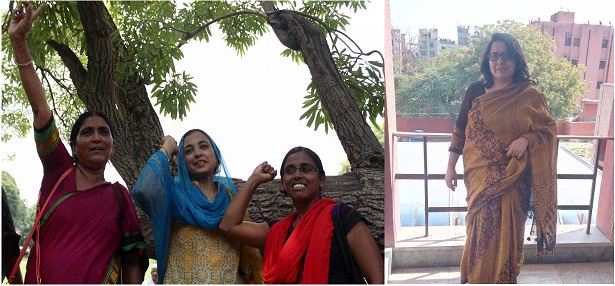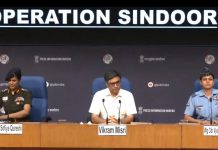Dr. Firdous Azmat Siddiqui
The twenty-three pages’ new guidelines published on the website of the University Grants Commission have raised some important questions about the future of hundreds of women’s studies centres in the country. The most important thing to be noticed is the fact these guidelines published on their website are date marked to be 5th March and seem like a gift for International Women’s Day (Although they were published on March 12th ). In these new guidelines, there are many intriguing dreams, of bringing women’s issues from the margins to the centre, instructing women’s studies to be established as a core mainstream subject, as well as empowering women by raising their social status and position in society, and to connect all these issues to sustainable development goals. Also, focus has been placed on having multidisciplinary research topics in these centres and focus has been placed on translation work, which is a welcome step. At least the needs and challenges of women studies as a subject have been very clearly addressed.
Regardless of all these beautiful dreams, the matter of concern for the Centres for Women’s Studies in India is the fact that these new guidelines are silent on the fate and future of the 167 women’s studies centres already in existence since the past 20 years. It is silent on the fact that whether they will continue to run or not, and if so, they will be under the aegis of which guide line, old or new? These centres have been growing very rapidly in the past ten years and have undergraduate and graduate programs (BA, MA, Mphil and PhD) in women’s studies. Hence, what will happen to all the academic and non-academic staff who came into existence in the last 10-15 years, and what will happen to hundreds of teachers who are connected with these centres as well as the fate of the families associated with them? There is no one to answer all these questions. What will happen to such centres which have not merged over time with the university system? Who is the culprit? The students who come to learn something new in these courses or all the non- teaching staff who are fighting instability about their future every day? Or the teacher who has been facing the dual faced sword every day for years with a dream that this subject will be recognized one day or the other in India. Inspite of all their hard work and wait for so many years, their existence is now questioned thanks to the new guidelines.
Further, for the last three years, women’s studies centres have to face the wrath of UGC every march regarding their fate for the next year. At least last year, UGC put an end to all the expectations through its letter regarding framing of new guidelines. The whole of last year was spent in waiting for these guidelines, and now when elections are on the head, on the occasion of the international women’s day, the women studies centres get a gift of an incomplete charter which these centres are not in a position to tolerate as they question their very existence. Is the establishment of a subject possible with the help of an honorary director and just two temporary assistants? If this is the case, how will the objectives of this scheme be fulfilled? That is of making it an intrinsic study subject. Also, how it will be made an important part of the curriculum of various departments? Perhaps this document is failing to explain a lot of those things. Also, it does not address the issue related to the principle of equal work equal pay of these teachers.
The most objectionable topic for these old centres is the fact that by adhering to the new format of annual reports, they have to accept this new scheme in principle, and this instruction is quite disappointing for them. How can these women’s studies centres forget their important place in the three-decade long struggle of the women’s movement in India? Also, how can they forget the fact that many of these centres have passed the third phase of development, and many are even in the advanced stages and have become advance research centres? What will the future of these Centres be now? What will be the source of their finances? Also, the University should have a direction and letter from the concerned authorities to merge or dissolve them within the system and tell them about the new roles. Also, why twenty years after their establishment, these centres are still looking at the website of UGC to ascertain their identity and future status? It would have been clearer if instead of closing the established centres, UGC would have given proper directions about opening some new centres. Why should these centres face the danger of them closing? As the planning commission was dissolved, why weren’t these centres merged with the university as an established department, as one important aim in all the previous guidelines (and even this one) has been the recommendation of merging these centres into departments one day?
If these shortcomings are not addressed even now, then UGC needs to take the initiative and give clear instructions to operate the old centres according to the previous guide lines and the rules of the time when they were set up. Further, it should initiate the process of converting the Women’s Studies Centers into a designated department soon as only then can the Sustainable Development Goals related to women’s empowerment can be attained in the true sense.
She is a writer and Associate Professor, Sarojini Naidu Centre for Women’s Studies at Jamia Millia Islamia.

















